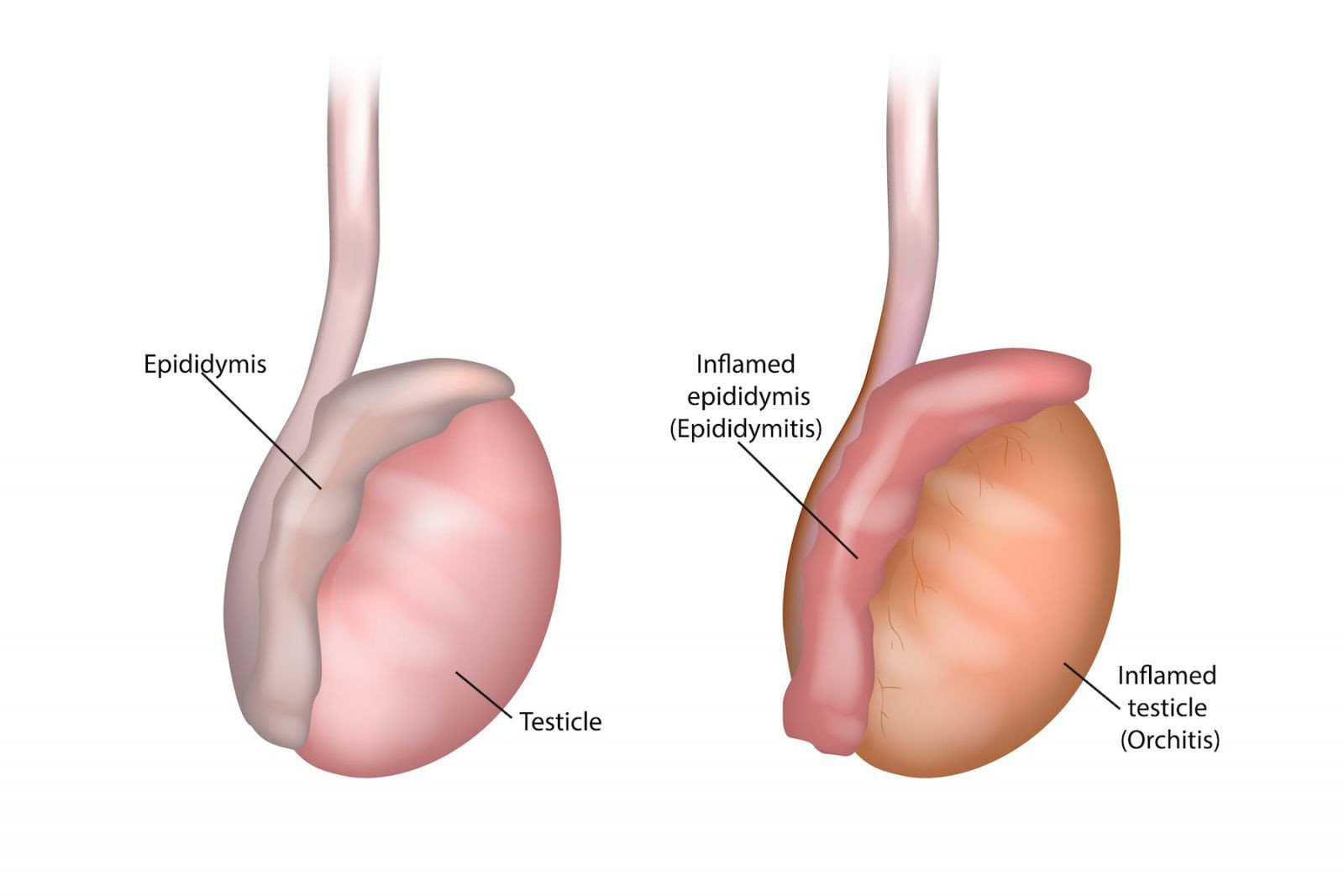Definition
A fistula is defined as an abnormal channel that forms between two organ locations. Fistulas can occur in any organ. However, in women, three types of fistulas most commonly occur: vesicovaginal fistula, ureterovaginal fistula, and rectovaginal fistula.
The definitions of these three types of fistulas are as follows:
- Vesicovaginal fistula: a channel that forms between the bladder and the vagina.
- Ureterovaginal fistula: a channel that forms between the ureter and the vagina.
- Rectovaginal fistula: a channel that forms between the rectum (anus) and the vagina.
In addition, fistulas can form between other internal organs, such as between the large intestine (colovaginal fistula) or the small intestine (enterovaginal fistula).
Fistulas are a relatively common condition. Approximately 100,000 people worldwide experience fistulas in the vaginal area each year, especially in countries with limited healthcare facilities.
The World Health Organization (WHO) estimates that 2 million people in Asia and Sub-Saharan Africa suffer from vaginal fistulas. Most of these fistulas are caused by prolonged vaginal childbirth due to the pressure from the baby pushing against the vaginal wall, reducing blood flow and causing tissue death around the vagina.
Causes
Fistulas in the vaginal area are most commonly caused by prolonged childbirth. However, other causes can lead to rectovaginal, vesicovaginal, or ureterovaginal fistulas, including:
- Episiotomy, or cutting the perineum during childbirth
- Pelvic cancers, such as uterine or colon cancer
- Abdominal and pelvic surgeries, such as cesarean sections and hysterectomies
- Inflammatory bowel diseases, such as Crohn's disease or ulcerative colitis
- Intestinal infections like diverticulitis
- Receiving radiation therapy in the pelvic area
- Other causes include impacted feces that cannot exit the intestine or injuries to the vagina unrelated to childbirth
Risk Factor
The risk factors for vaginal fistulas generally include:
- Women in reproductive age
- History of multiple childbirths
- Giving birth at home
- Prolonged labor
- Giving birth without medical assistance
- Lack of regular prenatal check-ups
- Cultural factors encourage early pregnancy and marriage
- Low socioeconomic status
- Lack of education and awareness regarding women's reproductive health
Symptoms
The symptoms of vaginal fistulas include:
- Abdominal pain
- Foul-smelling vaginal discharge
- Presence of gas, pus, or feces coming out of the vagina
- Nausea, vomiting, diarrhea
- Dyspareunia, or pain during sexual intercourse
- Recurrent urinary tract infections
- Vaginitis, or recurrent vaginal infections
- Rectal bleeding
- Vaginal bleeding
- Skin irritation around the vaginal area
- Perineal skin irritation
- Unexplained weight loss
Diagnosis
To diagnose fistulas, including vesicovaginal, ureterovaginal, and rectovaginal fistulas, doctors will conduct medical interviews (anamnesis), physical examinations, and additional tests.
Anamnesis involves asking about the patient's main complaints, associated symptoms, pregnancy and childbirth histories, previous diseases and treatments, family medical history, and daily activities and lifestyle.
This will be followed by a physical examination, which includes checking the patient's general condition, such as blood pressure, respiratory rate, pulse, and body temperature. The doctor will also perform a local examination of the pelvic and vaginal areas.
The doctor will use gloves to examine the vaginal and anal areas to check for changes in shape, fluids, and lumps. If necessary, the doctor may perform an internal vaginal examination using a speculum.
Additionally, the doctor may recommend further tests, such as pelvic x-rays, CT scans with contrast, and MRIs. Other examinations, like colonoscopy, sigmoidoscopy, blood tests, and urinalysis, may also be suggested if needed.
Management
The treatment for vaginal fistulas depends on their cause. Management can involve medication or surgical intervention.
Medication
Doctors may recommend medications to treat the fistula directly or as preparation for surgery, including:
- Antibiotics
Antibiotics may be given if an infection is found around the fistula. They are also useful as preparation for surgery.
- Pain Relievers
Pain relievers like ibuprofen and paracetamol can be given to patients experiencing pain.
Surgical Intervention
Surgery is usually the primary treatment for vesicovaginal, ureterovaginal, and rectovaginal fistulas. An obstetrician-gynecologist with a subspecialty in urogynecology will typically perform the surgery. The main goal is to remove the fistula and close the abnormal channel.
Post-surgery, patients will be given antibiotics to prevent infection. They are also advised to:
- Avoid sexual intercourse
- Not use tampons or wash the vagina with soap initially
- Consume a high-protein, fiber, and vitamin diet, including fruits, vegetables, and meats, to aid wound healing and prevent constipation
- Avoid acidic or spicy foods to prevent diarrhea
Most fistula patients recover without symptoms post-surgery. However, if the fistula reoccurs and does not heal properly, there may be an underlying condition like malignancy or cancer in the intestinal or vaginal area.
Complications
- Fecal incontinence or the inability of the anus to retain the compulsion to defecate, resulting in the involuntary expulsion of feces
- Hygiene and sanitation problems with reproductive organs
- Recurrent urinary tract infections.
- Irritation and inflammation of the vagina, perineum, or surrounding skin
- An infected fistula can become an abscess, a pus-filled lump that can be life-threatening if not treated properly
- Recurrence or recurrent fistulas
- Surgical complications, including infection, if antibiotics are not taken as prescribed. Diarrhea and constipation can occur if the patient does not meet their fluid, protein, and fiber needs post-surgery
Prevention
Preventing fistulas can be addressed by:
- Regular prenatal check-ups to identify and manage fistula risk factors
- Exercise to improve pelvic muscle flexibility before childbirth to ensure a smooth delivery
- Choosing a competent medical facility for childbirth to prevent fistulas
When to See a Doctor?
See a doctor immediately if you have recently given birth and experience any of these symptoms. Consult a gynecologist, who may refer you to a urogynecology specialist if the fistula is severe and requires surgical intervention.
Looking for more information about other diseases? Click here!
- dr Nadia Opmalina
Cleveland Clinic - Rectovaginal Fistula. (2022). Retrieved 15 October 2022, from: https://my.clevelandclinic.org/health/diseases/22260-rectovaginal-fistula
Cleveland Clinic - Vesicovaginal Fistula. (2022). Retrieved 15 October 2022, from: https://my.clevelandclinic.org/health/diseases/16442-vesicovaginal-fistula
Mayo Clinic - Rectovaginal Fistula. (2020). Retrieved 15 October 2022, from: https://www.mayoclinic.org/diseases-conditions/rectovaginal-fistula/symptoms-causes/syc-20377108
Medscape - Vesicovaginal Fistula and Ureterovaginal Fistula. (2021). Retrieved 15 October 2022, from: https://emedicine.medscape.com/article/452934-overview
Tebeu P.M., Fomulu J.N., Rochat C.H., (2012). Risk factors for obstetric fistula: a clinical review. Retrieved 15 October 2022, from: https://www.ncbi.nlm.nih.gov/pmc/articles/PMC3305871/
WebMD - Vaginal Fistula. (2022). Retrieved 15 October 2022, from: https://www.webmd.com/women/guide/what-is-a-vaginal-fistula











